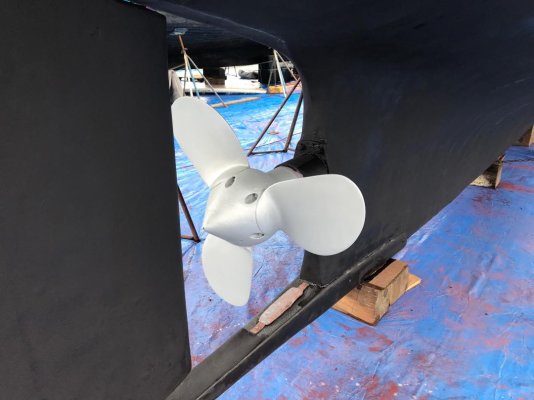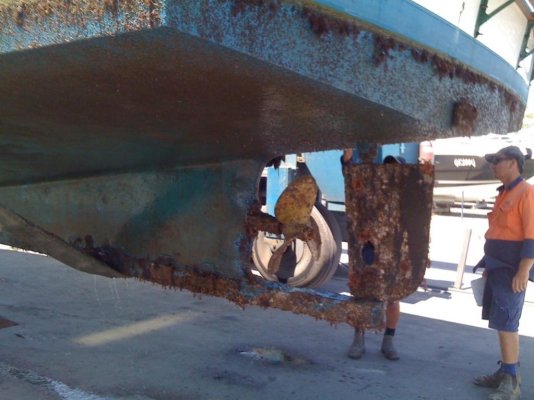sunchaser
Guru
- Joined
- Apr 9, 2008
- Messages
- 10,291
- Location
- usa
- Vessel Name
- sunchaser V
- Vessel Make
- DeFever 48 (sold)
Prop speeds effectiveness depends on actual prop speed.
I have been told, by several people including those that have a vested interest (prop and shaft engineers and applicators), that if your prop doesn't spin fast, prop speed is likely a waste of $$.
We have 4.52:1 reduction on our gearbox so on an 1150 rpm cruise we can almost count shaft rotation at 254 rpm.
At what prop RPM do your sources say prop speed is effective - i.e. keep growth off props? At 2:1 it works for us with several now and then bursts to around 2,000 engine RPM and a normal cruise of 1700 RPM.
Last edited:




 Prop always rotates clockwise when viewed from the rear, and since you don't have to slow the engine down, shift to neutral, then into reverse, then bring rpm back up, you can go from full forward to full reverse in a matter of a few seconds! More common in working boats, or really high end pleasure boats. Expen$ive to buy and install, but the boat already had it installed!
Prop always rotates clockwise when viewed from the rear, and since you don't have to slow the engine down, shift to neutral, then into reverse, then bring rpm back up, you can go from full forward to full reverse in a matter of a few seconds! More common in working boats, or really high end pleasure boats. Expen$ive to buy and install, but the boat already had it installed!
